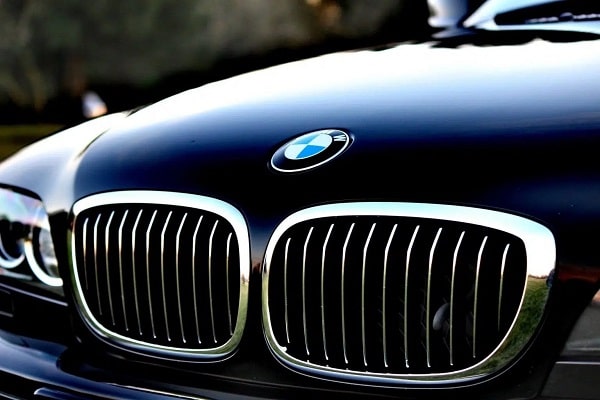The 10 Best BMWs In History – Top Quality Versions
BMW is the acronym for Bayerische Motoren Werke, which can be translated as “Bavaria Engine Factory”. It is one of the world’s leading automobile manufacturers, renowned for its high-end vehicles.
With origins dating back to 1917, BMW went through multiple stages but always managed to leave a mark. Today the company is a group that manages the BMW, Rolls Royce, MINI and BMW Motorrad brands, with some 125,000 employees and also production of motorcycles, bicycles and engines and intervention in other businesses (such as insurance and banking).

Among the best BMWs in history are cars designated as great classics. They are vehicles that almost all people dream of driving, although few get that privilege.
“The pleasure of driving”, in fact, is the slogan of this German company. BMWs are much more than a means of transport: they invite you to live a fascinating experience where comfort and well-being are perfectly combined.
Some of the best BMW models in history have more than half a century of experience; others are more recent. The fact of sharing the BMW logo makes them members of a family admired by women and men from the five continents and from different generations.
It is interesting to note that collectors are often after the best BMWs ever. After all, these cars are valued as true works of art for their design and engineering. Coveted and acclaimed pieces, without a doubt they are part of the most excellent of the automotive industry of all time.
1. BMW 2002
The BMW 02 Series had its production between 1966 and 1977. This denomination, which began to be used in ’71, alludes to the two doors of these vehicles equipped with a four-cylinder engine.
As for the first digits of the name of each model, it is linked to the displacement of the engine. Focusing on the cars of the 2002 group, in this way, they are cars with a displacement of two liters.
The BMW 2002 Turbo is the most powerful design of the set: 170 CV. Mentioned as the predecessor of the modern BMW M2 Coupe, it was the first European car to have a turbocharged engine from the factory.
The creation of the 2002 BMW line took a certain distance from the brand’s usual luxury to focus on agility. In the specific case of the aforementioned 2002 Turbo, one of the best BMWs in history, they also opted for the maximum possible power. With a weight of 1,060 kilograms, this car can exceed 200 kilometers per hour, accelerating to 100 km/h in just over 7 seconds.
2. BMW M3
The BMW E3 series was born in 1975. Eleven years later, it began to have its sports version created by BMW Motorsport: M3.
After 1986 and up to the present, the BMW M3 line is still in production with various models that have been gaining in cylinders and horsepower. The E30 M3 was the first car of this type, with an inline four-cylinder engine.
That first generation of M3 was available in cabriolet and coupe, in both cases with two doors. The evolution, since then, never stopped.
The 2021 BMW M3 is the sixth generation of the range. It has 480 horses in the standard version and 510 in Competition. In the latter car, acceleration from 0 to 100 km/h is achieved in just 3.9 seconds.
It should be noted that the M3 2021 reaches 250 km / h. However, with an optional package, that limit can be moved up to 290 km/h.
3. BMW i8
Many of the best BMWs in history were born more than half a century ago. However, the German manufacturer never stopped producing quality cars and that is why there are models that became instant classics.
The BMW i8 is a vehicle that garnered fans as soon as it hit the market. It is a plug-in electric hybrid whose production began in 2014 and was maintained for six years.
With coupe and roadster versions, the i8 surprises with its aerodynamic properties. It has four-wheel drive, vertical doors and reaches a speed of 120 kilometers per hour in electric mode.
The maximum power of the electric motor is 143 hp. When combined with the three-cylinder gasoline engine, the BMW i8 reaches a total power of 374 hp that allows it to go from 0 to 100 km/h in 5 seconds.
Beyond these benefits, the i8 marvels at its sustainability. In addition to being hybrid, its textiles include recycled PET plastics, it features aluminum from reused sources, and it has laser headlights, for example.
4. BMW Z8
At the beginning of the 21st century, BMW wowed with the introduction of a two-door convertible: the Z8, which it produced from 2000 to 2003. A luxury car of which less than 6,000 units were manufactured, with various details finished by hand.
The BMW Z8 was born from a prototype (the Z07) that was unveiled in 1997. The impact of that original design by Henrik Fisker motivated the development of this limited production.
With an acceleration from 0 to 100 km/h in 4.7 seconds and a top speed of 250 km/h, the Z8 soon entered the select group of the best BMWs in history. The model even became one of the fabulous James Bond cars, appearing in the movie “The World Is Not Enough” (known in our language as “007: The world is not enough” or “The world is never enough” ) that had Pierce Brosnan as the lead.
5. BMW E24
The E24, which began to be marketed in 1976, marked the arrival of the BMW 6 Series. Successor to the E9, it was designed by Paul Bracq and was manufactured until 1989, reaching more than 86,000 units.
The 630 CS and 633 CSi were the first models in this line. In the case of the 630 CS, it features a six-cylinder engine with a power of 1840 hp.
Numerous variants and modifications were introduced over the years. This is how the 628 CSi, the 635 CSi and the M635 CSi, for example, emerged.
The fastest BMW E24 is the M635 CSi manufactured between 1984 and 1989. It reaches 255 kilometers per hour, with acceleration from 0 to 100 km/h in 6.4 seconds. There is quite a difference with the 630 CSi, to name another model, which reaches 198 km/h with acceleration from 0 to 100 km/h in 11 seconds.
6. BMW M1
The BMW M1 is a sports car designed to shine on the competition tracks, but also to shine in urban environments, highways and routes or roads. It was produced between 1978 and 1981 in partnership with Lamborghini, becoming the brand’s first car with a mid-rear engine.
Every detail of the BMW M line is designed according to aerodynamic factors. In any case, the series does not neglect aesthetics, as can be seen in the fine and elegant style of the M1.
With a six-cylinder engine and 3.5-liter displacement, the BMW M1 soon captivated pilots and speed lovers. Between 1979 and 1980, these vehicles allowed the development of a single-make competition (BMW M1 Procar Championship) that saw two Formula 1 legends win the title: the Austrian Niki Lauda (champion of the first season) and the Brazilian Nelson Piquet (who imposed in ’80).
7. BMW 507
Between 1956 and 1960 the BMW 507 was manufactured, a convertible car that allowed the rebirth of the German company after the debacle of World War II. This two-door sports car features aluminum bodywork.
Powered by a 3.2-litre V8 engine, the BMW 507 can accelerate from 0 to 100 km/h in 8.8 seconds. Its top speed, meanwhile, reaches 217 km/h.
The popularity of the 507 multiplied thanks to Elvis Presley, who had a unit and was portrayed in it in an iconic photograph where he wears the US Army suit. Despite this marketing success, the financials were not too positive, even when the model was among the most expensive of the brand.
Over time, however, the 507 began to be mentioned among the best BMWs ever. In fact, this vehicle inspired the development of other company models.
8. BMW Z3
Many sports car lovers consider the Z3 one of the best BMWs ever. It was produced between 1996 and 2002 as a convertible and in a coupe version.
In total, almost 300,000 units of this rear-wheel drive car with longitudinal front engine were produced. The design was carried out by the Japanese Joji Nagashima, who took the 507 as his starting point.
The BMW Z3 featured different engines. Thus, from 1.8 liters of displacement and 115 CV of power, it went to 3.2 liters and 325 CV.
As with the BMW Z8 and other vehicles from the German manufacturer, the Z3 had the opportunity to shine on the big screen with James Bond behind the wheel. In this case, he appeared in “GoldenEye”, the 1995 film where Pierce Brosnan played agent 007 for the first time. This Hollywood foray of the BMW Z3 increased interest in the car.
9. BMW M5
The Amsterdam Motor Show was the place chosen by BMW to present, in 1984, the first of its M5s. It was the E28 M5, a four-door sedan that was manufactured until 1988 and of which 2,200 units were produced.
With straight six-cylinder motorcycles, this first-generation BMW M5 accelerated from 0 to 100 km/h in 6.5 seconds and reached a speed of 245 km/h. From ’89 to ’95 the second generation (the E34 M5 ) was developed.
The evolution never stopped and so in 2017 the production of the sixth generation of M5 began. The F90 M5 accelerates from 0 to 100 km/h in just 3 seconds and its top speed is 305 km/h. It has a 4.4-liter twin-turbo V8 engine and an eight-speed automatic gearbox. It should be noted that the historical journey of the BMW M5 is not over yet: the manufacturer plans to present new versions.
10. BMW 3.0
From 1968 to 1975 the coupes known as the BMW E9 or BMW 3.0 were produced. The 2800 CS was the first model in this series, designed by Wilhelm Hofmeister.
The 3.0 CS/CSi, the 3.0 CSL and the 2.5 CS were the next versions. In total more than 30,000 vehicles of the BMW E9 range were generated.
In this group stands out the BMW 3.0 CSL, manufactured between 1971 and 1975. It was the first creation of BMW Motorsport, which is why this car is considered the pioneer of the M models.
Read Also: The 10 Best Automobile Manufacturers In The World
The BMW 3.0 CSL has a 3.0 six-cylinder engine with a power of 206 hp and can accelerate from 0 to 100 km/h in 7.3 seconds. This car shone in the European Touring Car Championship (ETCC, according to its acronym in English), winning the title in 1973 and in all editions from 1975 to 1978 inclusive, evidencing overwhelming dominance.







